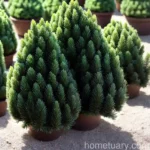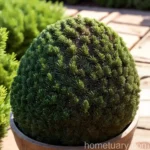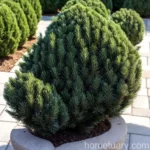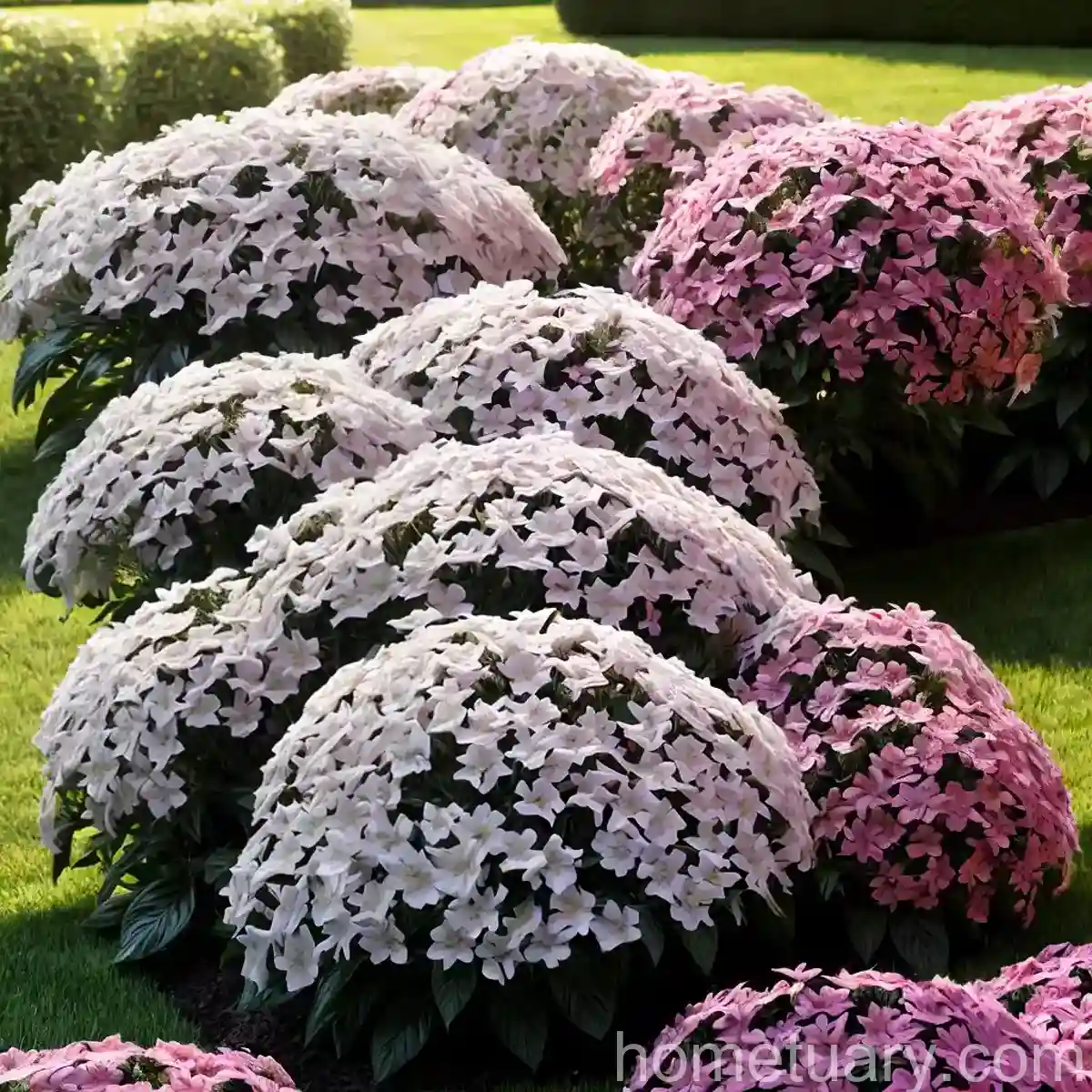Colorado Spruce (Picea pungens ‘Pendula’)
What is a Plant?
Plants are living organisms that belong to the kingdom Plantae. They are multicellular eukaryotes, meaning their cells have a true nucleus and membrane-bound organelles. Plants are characterized by their ability to photosynthesize, using sunlight to convert water and carbon dioxide into organic compounds. This process provides the energy needed for their growth and development.
Plants play a vital role in the Earth’s ecosystem, serving as primary producers that form the base of the food chain. They also contribute to the oxygen and carbon cycles, influencing the composition of the atmosphere. The field of plant science encompasses various aspects of plant life, including plant anatomy, physiology, ecology, and genetics.
Colorado Spruce (Picea pungens ‘Pendula’)
Colorado spruce, scientifically known as Picea pungens ‘Pendula’, is a captivating ornamental tree prized for its graceful weeping form and striking blue-green needles. This cultivar is a variant of the Colorado blue spruce, a species native to the western United States. With its distinctive pendulous branches and vibrant foliage, the Colorado spruce ‘Pendula’ has become a popular choice for landscaping and garden enthusiasts.
Key Takeaways – Colorado Spruce (Picea pungens ‘Pendula’)
Before delving into the specific details of the Colorado spruce (Picea pungens ‘Pendula’), let’s highlight some key takeaways associated with this remarkable plant:
- Scientific Name: Picea pungens ‘Pendula’
- Common Names: Colorado spruce, Blue spruce Pendula, Weeping Colorado spruce
- Plant Type: Ornamental conifer tree
- Key Characteristics: Weeping habit, blue-green needles
- Cultivation Uses: Landscaping, ornamental focal point
- Growth Rate: Moderate
- Hardiness Zone: Zones 2-7
Now, let’s explore the various aspects of this plant in detail.
Culture
Colorado spruce (Picea pungens ‘Pendula’) thrives in environments that mimic its native habitat. Understanding its cultural requirements is crucial for successfully nurturing and maintaining this unique tree.
Water
Proper watering is essential for the health and vitality of the Colorado spruce ‘Pendula’. While the tree prefers moist, well-drained soil, it is important to allow the soil to partially dry out between watering sessions.
To maintain optimal moisture levels, apply water at the base of the tree, directing it towards the root zone. During the dry summer months, regular watering is necessary to prevent the soil from becoming excessively dry. However, it is equally important to avoid over-watering, as this can lead to root rot and other moisture-related issues.
Sunlight
When it comes to sunlight requirements, the Colorado spruce ‘Pendula’ thrives in full sun to partial shade. In its natural habitat, this tree receives ample sunlight, and replicating similar conditions in a cultivated landscape can enhance its growth and overall appearance.
Select a planting location that receives direct sunlight for a significant portion of the day. However, if full sun exposure is not feasible, the tree can tolerate partial shade, especially in regions with intense summer heat.
Fertilizer
Fertilization plays a key role in supporting the growth and development of the Colorado spruce ‘Pendula’. Use a balanced, slow-release fertilizer formulated for evergreen trees to provide essential nutrients without causing rapid growth spurts.
Apply the fertilizer in early spring before the onset of new growth. Be mindful of following the manufacturer’s instructions regarding application rates and methods to avoid over-fertilization, which can adversely impact the tree’s health.
Soil
Colorado spruce (Picea pungens ‘Pendula’) thrives in well-drained, loamy soil that is slightly acidic. The tree is sensitive to waterlogged conditions and poorly aerated soil, so it is essential to ensure proper soil drainage. Amending heavy clay soils with organic matter and creating raised beds can improve soil structure and drainage for optimal growth.
Additionally, a soil pH ranging from 5.5 to 7.0 is considered ideal for the Colorado spruce ‘Pendula’. Conducting a soil test can provide valuable insights into the soil’s pH and nutrient levels, allowing for targeted amendments to create an optimal growing environment for the tree.
Pruning
Pruning is an integral part of maintaining the graceful form and structure of the Colorado spruce ‘Pendula’. Regular pruning helps manage the tree’s size, promotes air circulation within the canopy, and removes any damaged or diseased branches.
When pruning the weeping branches, it is essential to exercise caution to preserve the tree’s natural form. Avoid heavy pruning during the dormant season, as excessive removal of branches can disrupt the tree’s growth patterns and lead to unsightly regrowth.
Propagation
Propagating Colorado spruce (Picea pungens ‘Pendula’) typically involves the use of cuttings to produce new plants with identical characteristics to the parent tree. Softwood or semi-hardwood cuttings taken from healthy, vigorous branches can be utilized for propagation.
Here are the general steps for propagating Colorado spruce ‘Pendula’ through stem cuttings:
- Select a healthy branch with young, actively growing shoots for taking cuttings.
- Prepare the cutting by making a clean, diagonal cut just below a node, ensuring it is approximately 6-8 inches long.
- Remove the lower foliage from the cutting, leaving only a few needle clusters at the tip.
- Dip the cut end of the cutting in a rooting hormone to promote root development.
- Plant the cutting in a well-draining rooting medium and provide consistent moisture and indirect light.
- Monitor the cutting for root development, and once roots have established, carefully transplant it into a suitable growing container or prepared ground.
Propagation through cuttings may require several months for the new plant to establish roots and develop into a viable transplant.
Container Popularity
The elegant appearance and compact size of the Colorado spruce ‘Pendula’ contribute to its popularity as a container plant. It serves as an eye-catching addition to outdoor spaces and can be featured on patios, decks, or urban gardens. Utilizing containers offers flexibility in terms of placement and allows individuals with limited outdoor space to enjoy the beauty of this ornamental conifer.
When selecting a container for the Colorado spruce ‘Pendula’, opt for a spacious, well-draining vessel to accommodate the tree’s root system and provide adequate room for growth. Additionally, using a high-quality potting mix designed for container plants can promote healthy root development and overall plant vigor.
Container-grown Colorado spruce ‘Pendula’ trees require regular monitoring of soil moisture, as containers may dry out more rapidly than ground soil. Water the tree thoroughly when the top inch of the soil feels dry, and adjust the frequency of watering based on environmental conditions and the tree’s specific water needs.
Container Common Diseases
While container cultivation offers numerous benefits for the Colorado spruce ‘Pendula’, it is important to be mindful of potential diseases that can affect the tree when grown in containers. Several common diseases may pose a threat to containerized specimens, and being proactive in disease prevention and management is essential for maintaining the tree’s health.
Disease Diagnosis
Diagnosing diseases in container-grown Colorado spruce ‘Pendula’ involves observing the tree for symptoms such as:
- Needle discoloration or browning
- Twig dieback
- Presence of fungal growth on needles or branches
- Unusual patterns of needle loss
If any of these symptoms are observed, it is crucial to promptly investigate the underlying cause and implement appropriate measures to address the issue.
Common Pests
Containerized Colorado spruce ‘Pendula’ trees may be susceptible to certain pests that can compromise their vigor and overall condition. Vigilant monitoring is essential for early detection of pest infestations, allowing for timely intervention to mitigate potential damage.
Common Pests:
-
Aphids: These small, sap-sucking insects can colonize the new growth and tender shoots of the tree, causing distortion and stunted growth. Regularly inspect the tree for the presence of aphids and utilize insecticidal soaps or horticultural oils to control infestations.
-
Spider Mites: These tiny arachnids can inflict damage by piercing the needles and extracting sap, leading to stippling and discoloration. Increased humidity and utilizing predatory mites or insecticidal treatments can aid in managing spider mite populations.
-
Spruce Gall Adelgids: These pests induce the formation of galls on spruce trees, impacting their aesthetic appeal. Prune and destroy affected plant parts to manage infestations and minimize the spread of the pest.
Implementing integrated pest management strategies, including regular inspections, cultural practices, and targeted treatments, can effectively mitigate pest pressures and maintain the health of containerized Colorado spruce ‘Pendula’ trees.
Botanist’s Tips
Incorporating the following botanist’s tips can contribute to the successful cultivation and care of Colorado spruce (Picea pungens ‘Pendula’):
-
Mulching: Apply a layer of organic mulch around the base of the tree to conserve soil moisture, suppress weed growth, and insulate the root system from temperature fluctuations.
-
Winter Protection: In regions with harsh winter conditions, provide winter protection by wrapping the lower trunk of the tree with burlap or utilizing anti-desiccant sprays to reduce moisture loss from the foliage.
-
Environmental Adaptability: Recognize the Colorado spruce ‘Pendula’ as a versatile tree that exhibits adaptability to a range of soil types and climatic conditions, making it suitable for diverse landscapes and garden settings.
-
Disease and Pest Monitoring: Regularly monitor the tree for signs of diseases and pests, promptly addressing any issues to prevent escalation and ensure the tree’s continued vigor.
Incorporating these expert tips into the care regimen can enhance the overall resilience and longevity of Colorado spruce ‘Pendula’ trees in various growing environments.
Fun Facts
Uncovering fascinating and unique aspects of Colorado spruce (Picea pungens ‘Pendula’) can further deepen the appreciation for this captivating plant. Here are some fun and intriguing facts about the Colorado spruce ‘Pendula’:
-
Blue-Green Needles: The distinctive blue-green coloration of the tree’s needles intensifies in cold winter temperatures, creating a visually striking display against the backdrop of snow.
-
Weeping Form: The weeping habit of the Colorado spruce ‘Pendula’ adds an element of elegance and drama to the landscape, making it an exceptional focal point in garden designs.
-
Wildlife Attraction: The dense foliage of the tree provides shelter and nesting sites for various bird species, contributing to its ecological significance in supporting local wildlife populations.
-
Winter Interest: Beyond its summer beauty, the Colorado spruce ‘Pendula’ offers year-round appeal, particularly during the winter months when its evergreen foliage stands out in the landscape.
Unveiling these captivating facts can foster a deeper connection with the Colorado spruce ‘Pendula’ and inspire a renewed sense of admiration for its unique characteristics.
Links to External Resources
For further exploration and comprehensive information on Colorado spruce (Picea pungens ‘Pendula’) and related topics, the following external resources are valuable references:
-
Colorado State University Extension – Colorado Blue Spruce Tree Planting and Care Guide
-
University of Florida IFAS Extension – Blue Spruce Diseases & Insect Pests
By leveraging these external resources, individuals can delve deeper into the intricacies of cultivating, maintaining, and appreciating Colorado spruce (Picea pungens ‘Pendula’) and gain valuable insights from authoritative sources.
In conclusion, the allure of the Colorado spruce ‘Pendula’ lies in its distinctive weeping form, vibrant blue-green needles, and adaptability to various growing conditions. Embracing the cultural practices, propagation techniques, and botanist’s tips associated with this ornamental conifer can unlock the full potential of this captivating tree, enriching landscapes and gardens with its timeless beauty and visual elegance.
Incorporating the knowledge and insights shared in this comprehensive guide can empower plant enthusiasts and landscaping professionals to cultivate and celebrate the unique allure of Colorado spruce (Picea pungens ‘Pendula’) in diverse horticultural settings.
So, whether it’s the striking visual impact of its weeping branches or the year-round appeal of its evergreen foliage, the Colorado spruce ‘Pendula’ continues to captivate and inspire, leaving an indelible mark on the landscape and in the hearts of nature enthusiasts worldwide.
Remember to continue exploring the depths of plant science, and revel in the captivating beauty of the natural world that surrounds us.
Happy gardening and may your landscapes flourish with the magnificence of Colorado spruce (Picea pungens ‘Pendula’)!
References
Colorado State University Extension – Colorado Blue Spruce Tree Planting and Care Guide
The Spruce – Growing Colorado Blue Spruce Trees
University of Florida IFAS Extension – Blue Spruce Diseases & Insect Pests















